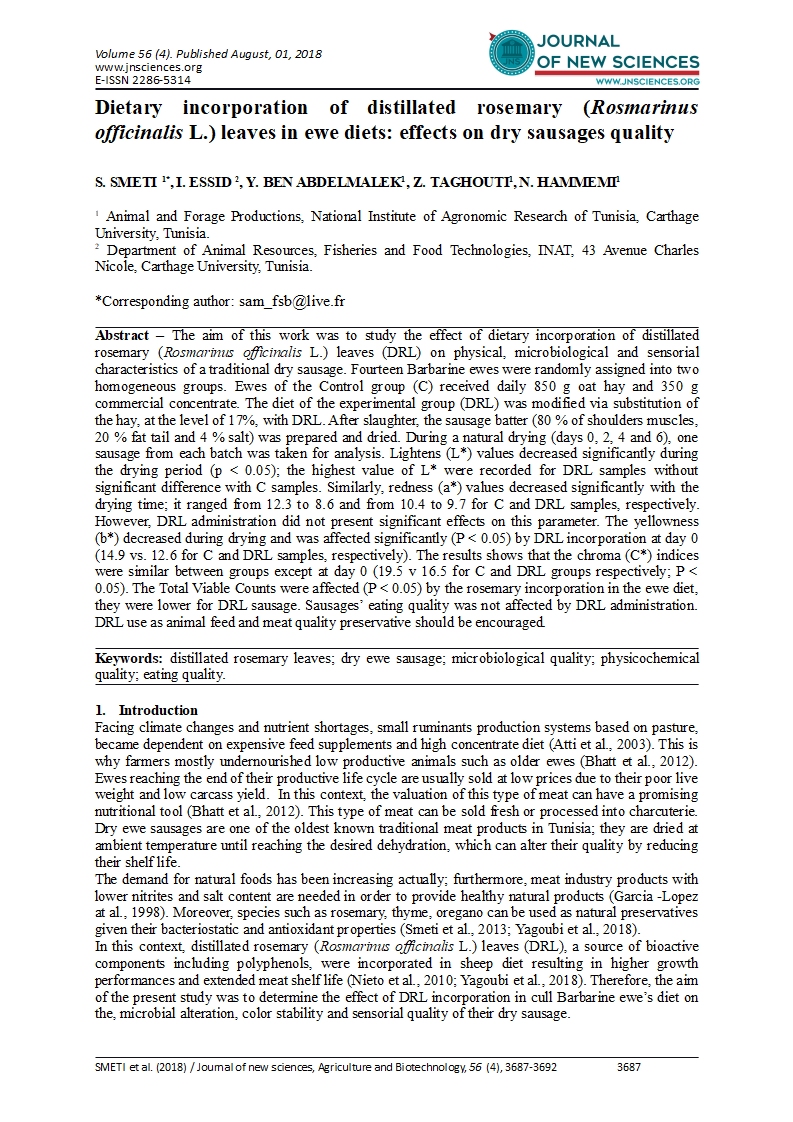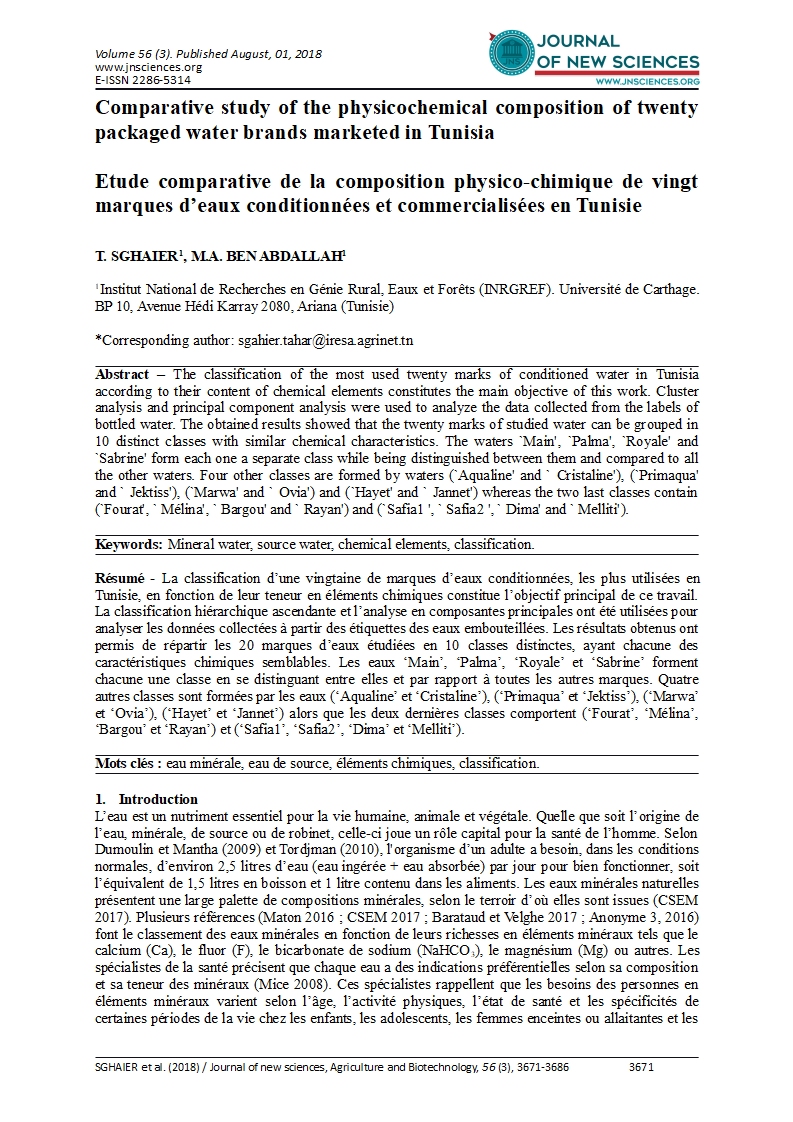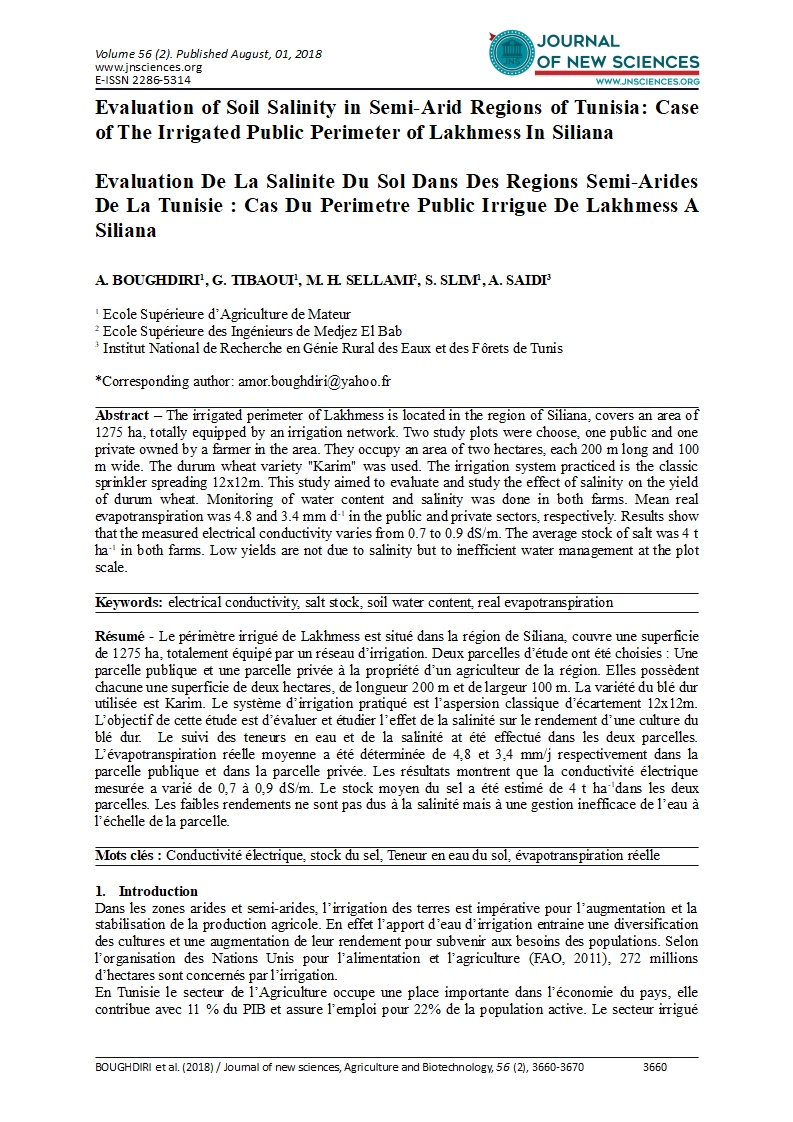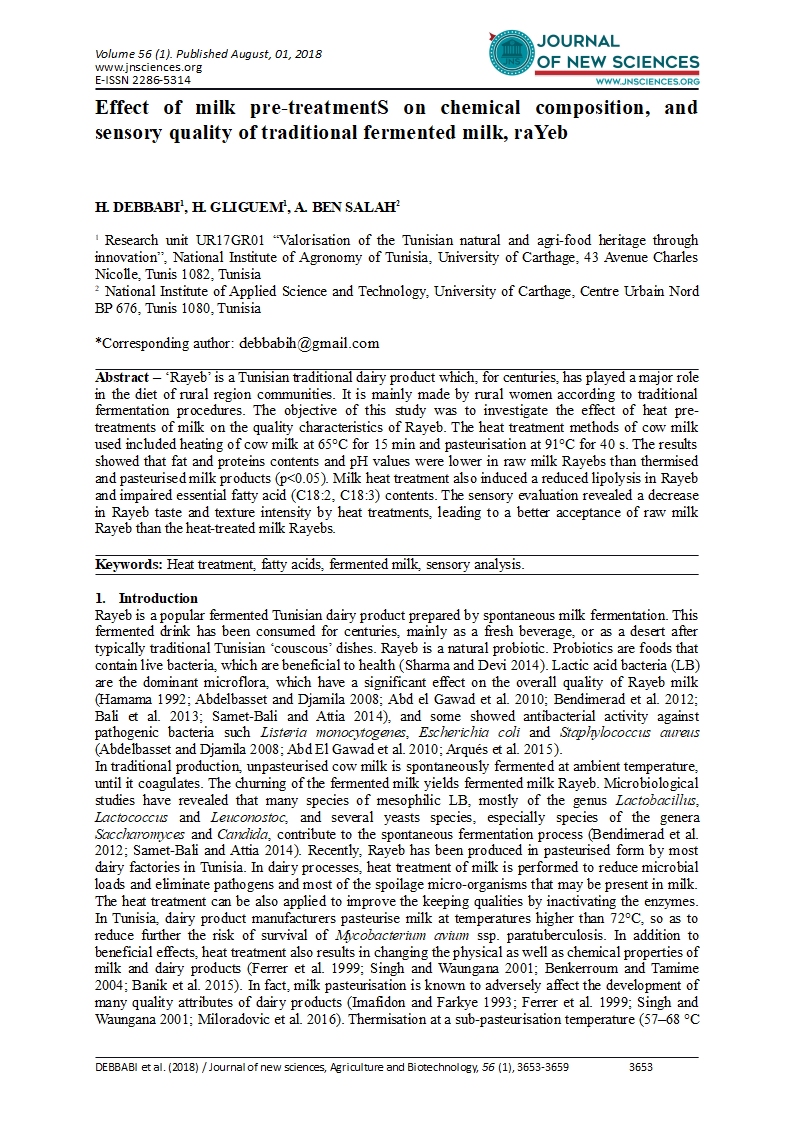- Category: Volume 56
- Hits: 5596
Dietary incorporation of distillated rosemary (Rosmarinus officinalis L.) leaves in ewe diets: effects on dry sausages quality

S. SMETI 1*
I. ESSID 2
Y. BEN ABDELMALEK1
Z. TAGHOUTI1
N. HAMMEMI1
1 Animal and Forage Productions, National Institute of Agronomic Research of Tunisia, Carthage University, Tunisia.
2 Department of Animal Resources, Fisheries and Food Technologies, INAT, 43 Avenue Charles Nicole, Carthage University, Tunisia.
Abstract – The aim of this work was to study the effect of dietary incorporation of distillated rosemary (Rosmarinus officinalis L.) leaves (DRL) on physical, microbiological and sensorial characteristics of a traditional dry sausage. Fourteen Barbarine ewes were randomly assigned into two homogeneous groups. Ewes of the Control group (C) received daily 850 g oat hay and 350 g commercial concentrate. The diet of the experimental group (DRL) was modified via substitution of the hay, at the level of 17%, with DRL. After slaughter, the sausage batter (80 % of shoulders muscles, 20 % fat tail and 4 % salt) was prepared and dried. During a natural drying (days 0, 2, 4 and 6), one sausage from each batch was taken for analysis. Lightens (L*) values decreased significantly during the drying period (p < 0.05); the highest value of L* were recorded for DRL samples without significant difference with C samples. Similarly, redness (a*) values decreased significantly with the drying time; it ranged from 12.3 to 8.6 and from 10.4 to 9.7 for C and DRL samples, respectively. However, DRL administration did not present significant effects on this parameter. The yellowness (b*) decreased during drying and was affected significantly (P < 0.05) by DRL incorporation at day 0 (14.9 vs. 12.6 for C and DRL samples, respectively). The results shows that the chroma (C*) indices were similar between groups except at day 0 (19.5 v 16.5 for C and DRL groups respectively; P < 0.05). The Total Viable Counts were affected (P < 0.05) by the rosemary incorporation in the ewe diet, they were lower for DRL sausage. Sausages’ eating quality was not affected by DRL administration. DRL use as animal feed and meat quality preservative should be encouraged.
Keywords: distillated rosemary leaves, dry ewe sausage, microbiological quality, physicochemical quality, eating quality.



